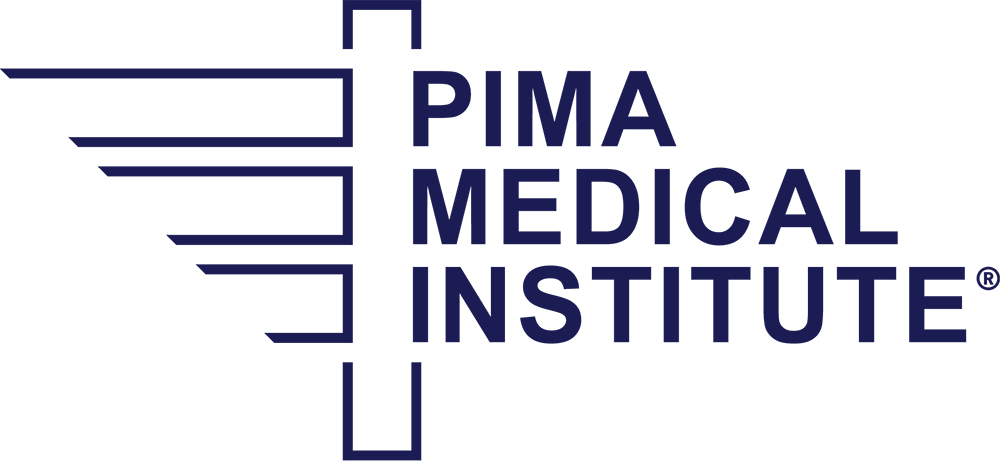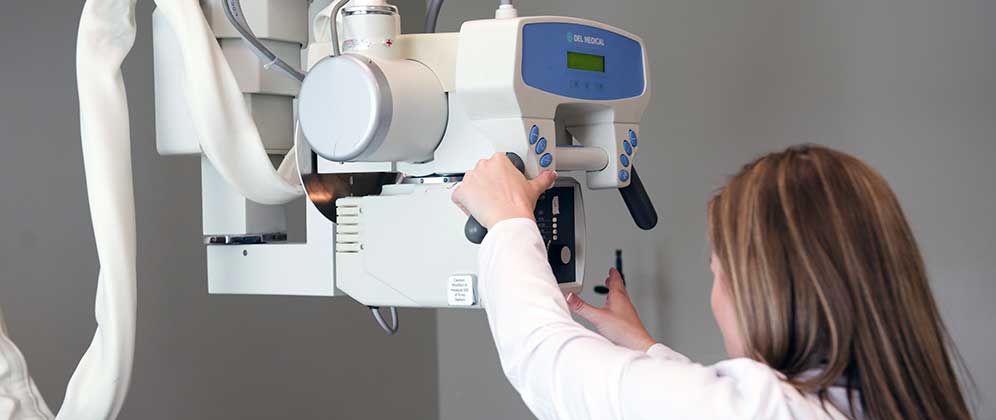Home / On Campus Programs / Radiography
Radiography Associate Degree Program
Program Type
Associate Degree
Delivery Method
On Campus
Course Length
Approximately
24 months
Program Objective
A radiologic technologist, also known as a radiographer, plays an important role within a medical team. They perform diagnostic medical imaging examinations that assist physicians in the diagnosis and treatment of disease.
The day-to-day responsibilities of a radiologic technologist include adjusting and maintaining imaging equipment, preparing patients, performing the procedure and evaluating images before physician review.
Students in the Radiography program will be introduced to a number of topics by expert instructors that prepare them to work as a radiologic technologist, including examination techniques, equipment protocols, radiation safety and radiation protection. Students will also learn how to take medical histories, answer questions and evaluate images for physicians.
Using hands-on training with equipment that mirrors real-world settings, students will gain confidence in accurately positioning patients for a high-quality diagnostic image, administering examinations and equipment protocols and performing imaging techniques such as:
- Bone densitometry
- Cardiovascular-interventional radiography
- Computed tomography
- Mammography
- Magnetic resonance imaging (MRI)
- Nuclear medicine
- Sonography
- General diagnostic radiography
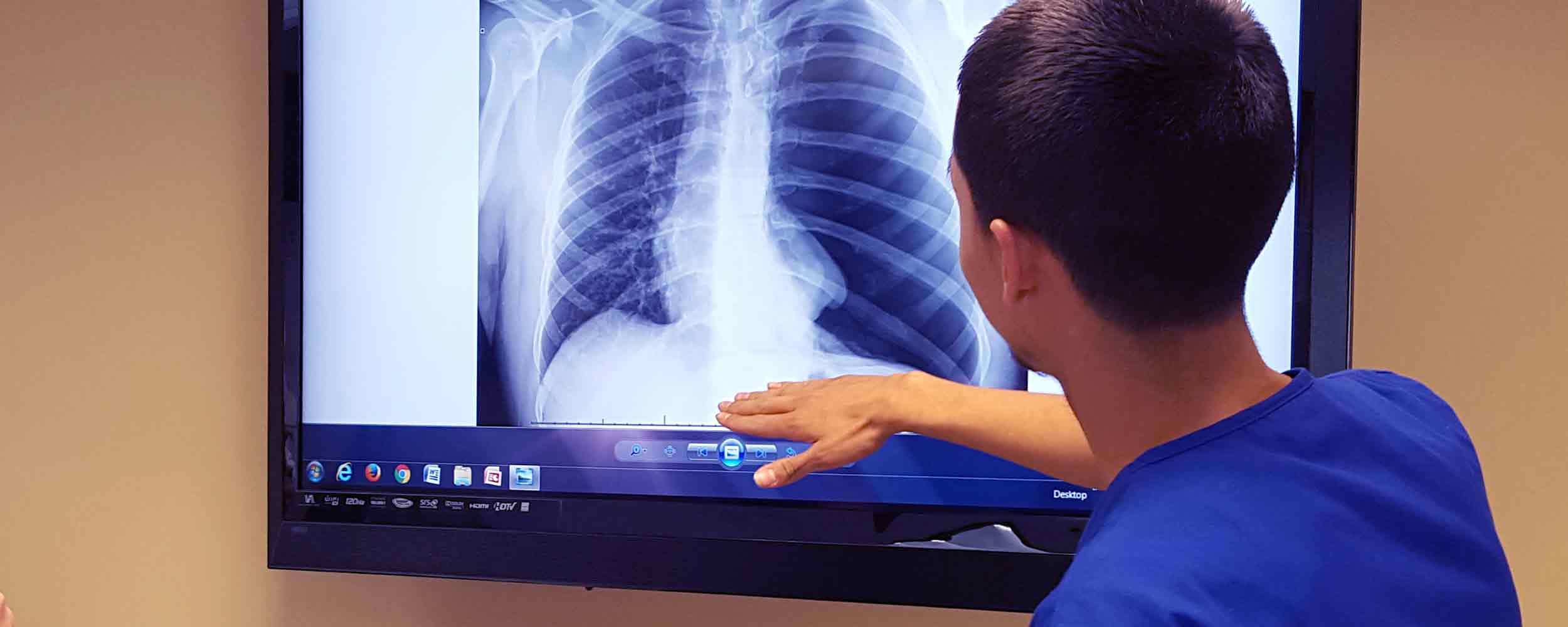
Graduates of the program from this school will be eligible to sit for the American Registry of Radiologic Technologists – Radiography Certification Exam
All Locations
Careers as a Radiographer
What Are My Career Opportunities as a Radiographer?
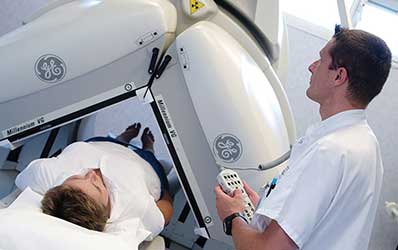
What Are My Career Opportunities as a Radiographer?
This associate degree program will prepare graduates to apply their skills in a number of different roles, such as:
- Radiologic technologist
- X-ray technologist
- Other specialty role
They can work in a variety of environments:
- Hospitals
- Physicians’ offices
- Clinics
- Diagnostic imaging centers
- Outpatient care centers
Job Outlook
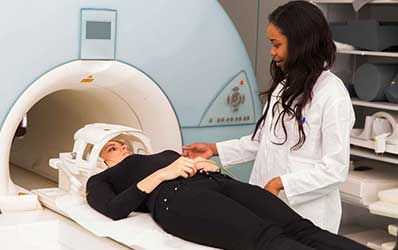
Job Outlook
As the population grows older, there will be an increase in medical conditions that require imaging as a tool for making diagnoses.
According to the U.S. Bureau of Labor Statistics, the overall employment of radiologic and MRI technologists is projected to increase faster than the average for all occupations.
Continued Education

Continued Education
At Pima Medical Institute, we offer an online Bachelor of Science in Radiologic Sciences. This degree gives ARRT-registered professionals the skills needed to move up within their field, with the flexibility of virtual instruction. Work on your degree anywhere, anytime.Online B.S. in Radiologic Sciences
Interested in breaking into leadership or healthcare administration? We offer an online Bachelor of Science in Health Care Administration.Online B.S. in Health Care Administration
When you’re a Pima Medical Institute student, you get access to our Career Services team—here for you when you need extra help with finding the right job opportunities, building a resume, strengthening your interview skills or just looking for general guidance.
Clinical Externships
Program Outline
Learn more about the courses in this program.
Add Your Heading Text Here
Semester l
Semester lI
Semester III
Semester IV
Semester V
Semester VI
Program is 90 weeks in length. The total number of program hours is 2,378 at all campuses except Las Vegas. Las Vegas campus program hours total 2,423.
Interested In Starting This Program?
Find out more about our Admissions Requirements or view our How to Apply page.
Success Is Within Reach
We are truly invested in making sure our students succeed.
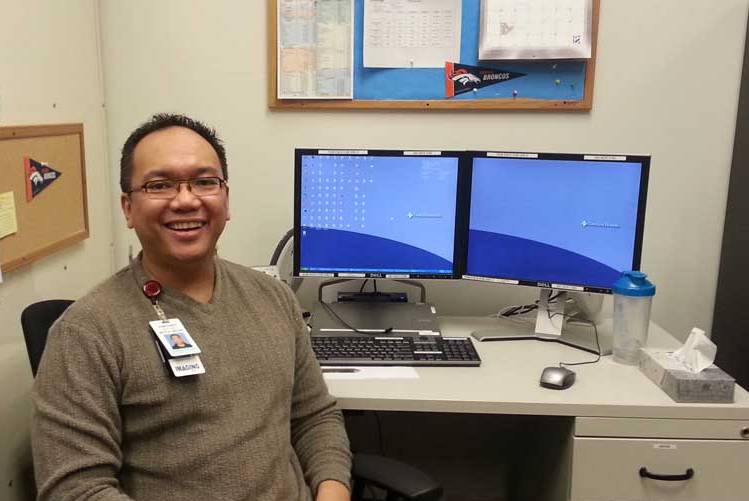
“After graduation, I applied everywhere and contacted everyone I knew in the business. I was hired at Boulder Hospital. Almost a year later, I was hired at Littleton Hospital where I have been expanding my experience. My future goal is to move into management. I recently completed Pima Medical’s Bachelor of Science in Radiologic Sciences. It’s been a good experience. I thought I might feel isolated learning online and on my own, but I found I was always in contact with my instructors. A big piece of online learning is time management. If I can do it, others definitely can.”
Johnathan Pagaduan, Radiography Graduate
Pima Medical Blog

This Radiography Graduate used her Associate Degree as a Stepping Stone to an Amazing Career in Healthcare
Meiko Sotomayor-Waters Onken is the Chief Operating Officer at both Banner University Medical Center Tucson and South Campuses, and a proud 1995 graduate of the…

Pima Medical Institute Launches Radiography Associate Degree Program at its San Antonio Campus
Pima Medical Institute’s San Antonio Campus has officially launched its Associate Degree in Radiography. The first class is set to begin in November. The Radiography…
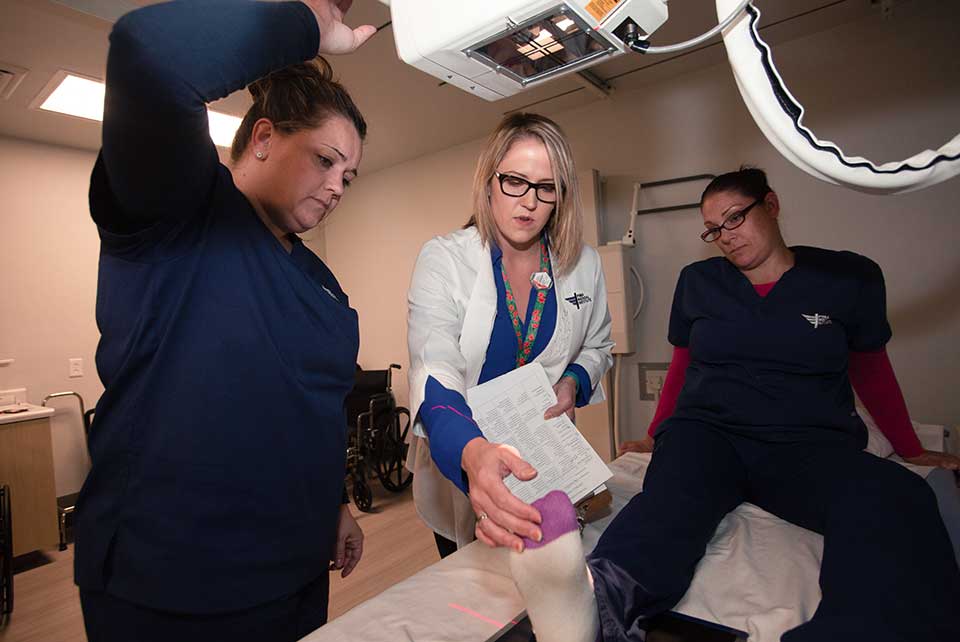
Radiography vs. Radiology: What’s the Difference?
Both radiologists and radiographers play important roles in the healthcare system. And, while each career path deals with issues regarding patient diagnostics and testing, radiologists are generally…
Disclosures And Accreditations
State Licensure Determination Disclosure
The Radiography program is offered via on-ground and hybrid delivery methods. The program is available to residents of Arizona, California, Colorado, Nevada, Texas, and Washington, and meets applicable licensure requirements in those states. While there may be online components, completion of this program requires on-ground attendance at the campus at which the student is enrolled and cannot be completed solely via distance education. Prospective students and enrolled students should understand that moving out of the state in which they enrolled may adversely impact a student’s ability to complete the program. If a student is planning to relocate outside of their state of enrollment he or she is required to discuss this with the Student Services Coordinator and/or Program Director.
In compliance with 34 CFR 668.43 Pima Medical Institute has made a reasonable effort to determine graduate eligibility for licensure in all states for programs designed and advertised as leading to licensure. The document below lists Pima Medical Institute programs and states where the curriculum meets licensure requirements, states where the curriculum does not meet licensure requirements, and states in which Pima Medical Institute has been unable to determine if the curriculum meets state licensure requirements. All consumers should be advised that due to the frequent changes to state statutes, rules, and regulations Pima Medical Institute cannot guarantee licensure based on the lists below.
Clinical Facility / Externship Requirements
Students are expected to travel for their clinical training within the greater metro area from where the campus is located. Depending upon the program / campus location, this can be greater than 60 miles. Programs may have distant sites readily available where students can volunteer to attend for one or more of their clinical experiences. All travel will incur additional costs but will vary based on student resources in the area, such as transportation, food, and housing.
Clinical training may include different shifts (evenings, nights, and/or weekends). Students are expected to work the shift determined by the site based on their clinical assignment and should be prepared to accommodate any shift during their clinical course.
Prospective students should inquire with the respective program director or clinical director for any specific clinical requirements.
Accreditation and Program Information
View accreditation information for all programs by campus
California Dept of Public Health-Radiologic Health Branch Examination Statistics
Program Mission Statement, Program Goals and Learning Outcomes
Radiography Program Admissions Requirements
JRCERT Program Effectiveness Data
| Pima Medical Institute Program Effectiveness Data | ||
|---|---|---|
| Albuquerque | Chula Vista | Denver |
| El Paso | Houston | Las Vegas |
| Mesa | San Antonio | Seattle |
| Tucson | ||
View program costs, additional disclosures and outcomes for this program (if applicable)
